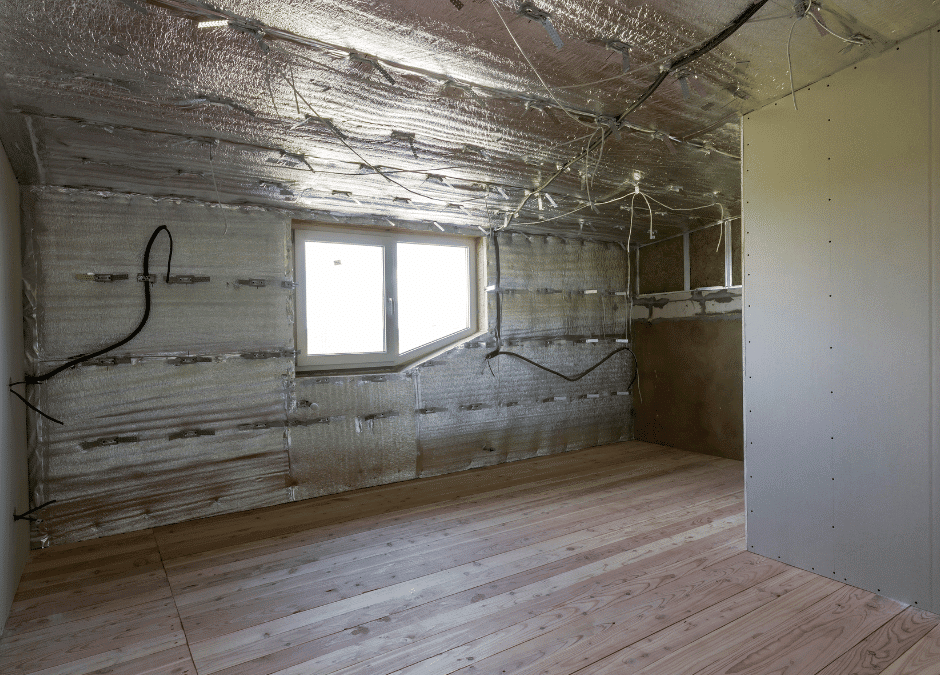Radiant barrier insulation is transforming how homeowners manage energy efficiency, significantly reducing cooling costs while enhancing comfort. This post explores the science behind radiant barriers and their substantial impact on home energy usage. By reflecting heat rather than absorbing it, radiant barriers ensure that homes remain cooler and more comfortable during the hot months. This technology saves money on energy bills and contributes to a sustainable living environment. Understand the functionality of radiant barriers and see how they can be a game-changer for your home’s energy efficiency.
What Is Radiant Barrier Insulation?
Radiant barrier insulation uses a reflective material, typically aluminum foil, to reflect rather than absorb radiant heat. This type of insulation is ideally placed in attics, where it can effectively prevent heat from the sun from warming up indoor spaces. By reflecting solar radiation, radiant barriers help maintain cooler indoor temperatures, significantly reducing the burden on air conditioning systems. This insulation method is particularly effective in sunny climates where excessive heat gain is a common issue. It’s a cost-effective solution that complements traditional insulation to improve energy efficiency.
The Science of Heat Transfer
The operation of radiant barriers is grounded in the science of heat transfer, which occurs in three primary forms: conduction, convection, and radiation. Radiant barriers address radiation heat transfer by reflecting heat away from your living spaces. Unlike traditional insulation, which primarily slows down the heat flow via conduction and convection, radiant barriers provide a reflective shield, reducing cooling needs and enhancing overall energy efficiency. This scientific approach to heat transfer is what makes radiant barrier insulation a critical component in modern energy-saving home designs.
How Radiant Barriers Work to Reflect Heat
Radiant barriers improve home comfort by reflecting the sun’s radiant heat, preventing it from entering through the roof. This reflection keeps indoor spaces cooler during peak heat times, reducing reliance on cooling systems and decreasing energy bills. By maintaining a cooler internal environment, radiant barriers help stabilize indoor temperatures and minimize thermal fluctuations. The effectiveness of this insulation type in hot climates makes it an invaluable investment for energy-conscious homeowners.
Benefits of Radiant Barrier Insulation in Homes
The installation of radiant barrier insulation brings several benefits, including significant energy savings and enhanced indoor comfort. Maintaining a more consistent indoor temperature reduces the operational frequency and strain on HVAC systems, thereby extending their lifespan. The lowered energy demand also contributes to a smaller carbon footprint, supporting environmental sustainability. Homeowners will notice improved temperature regulation and comfort, which is especially beneficial during the summer months.
Installation Techniques for Maximum Efficiency
Proper installation is crucial for maximizing the efficiency of radiant barriers. The reflective material must be positioned to face an open-air space to effectively reflect incoming heat. Commonly, radiant barriers are installed on the underside of roof rafters or directly over existing attic insulation. Correct placement ensures the barrier performs optimally, reflecting heat outward and keeping the home’s interior cool. Installation techniques vary depending on the building structure and specific homeowner needs.
Comparing Radiant Barriers with Other Insulation Types
Radiant barriers differ from traditional insulation types like fiberglass and cellulose by focusing on reflecting heat instead of absorbing it. This makes them particularly effective in climates where excessive heat is a problem. When used in conjunction with other insulation types, radiant barriers can offer a comprehensive solution that reduces heat gain and minimizes heat loss, ensuring efficient temperature control throughout the year.
How to Choose the Right Radiant Barrier for Your Home
Selecting the appropriate radiant barrier for your home requires careful consideration of several factors, including local climate, existing insulation, and specific structural characteristics of your home. Consulting with insulation experts like those at Green Smart Insulation can help determine the most effective radiant barrier solution tailored to your unique needs. Choosing a product and installation strategy that complements your home’s existing insulation is crucial to optimize energy efficiency.
Contact Us for Radiant Barrier Insulation Services
Radiant barrier insulation stands as a cutting-edge solution for enhancing home energy efficiency and comfort, especially in regions experiencing intense heat. By choosing Green Smart Insulation, you leverage the power of advanced insulation technology that reflects heat rather than absorbing it, ensuring your living spaces remain cool and comfortable. Reach out to us to discover how radiant barrier insulation can transform your energy usage and help you achieve a more sustainable home.


Recent Comments